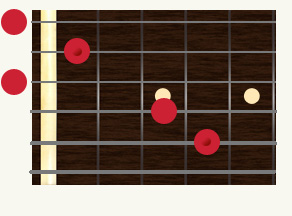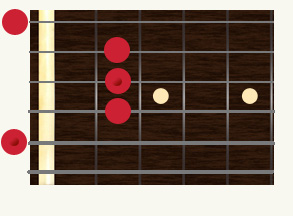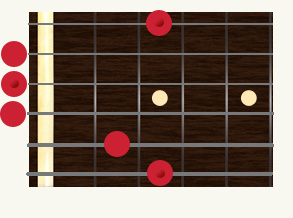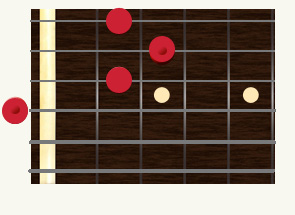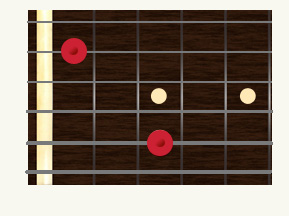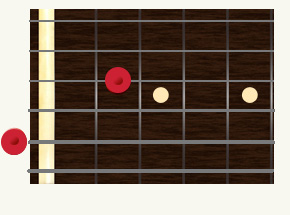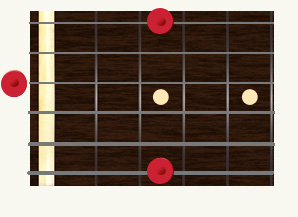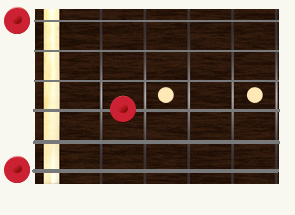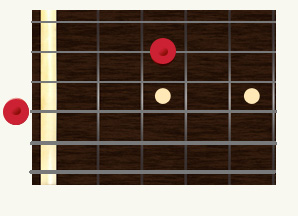The five open chord CAGED positions
C Major
A Major
G Major
E Major
D Major
Each set of root notes form a unique movable Octave Pattern
C Major Octave
A Major Octave
G Major Octave
E Major Octave
D Major Octave
Overlapping these five patterns in the ‘CAGED’ order enables us to chart every occurrence of any given note on the fret-board
The CAGED system also helps us with playing the major scales. Each chord fits fits to a particular scale. Learning the five major scale positions for the guitar it is a lot to have to remember especially when you have to think about these positions in twelve different keys.
By combining the major scales with the CAGED sequence of chords this task becomes much easier. Once you start to get used to the relationship between the chords and the scales you will start to realise that remembering these scale positions and being able to find them in any key becomes a lot easier.
The CAGED guitar system is a great method for getting to know your way round the guitar neck but it will take a little time familiarising yourself with it before you can use it to it’s full benefit.
Practice these chord positions regularly until you know them inside out and make sure you practice them in all twelve keys, this is extremely important. If you can’t use them in all keys then you are never going to see any benefit from using this method.
You might be wondering why learning the chords are so important, after all isn’t the CAGED system supposed to be all about helping you with your guitar solos? Yes it is, however the chord sequence itself is the heart of the system. It’s these chord shapes and positions that you can use as your foundation or your guide to find chord tones, arpeggios and scales anywhere on the fretboard very quickly and that is the heart of creating good guitar solos.
A great guitar solo isn’t just about choosing the right scale, that’s easy to do for most chord progressions. What we are looking for to create professional sounding lead guitar is ways to break out of the scale rut and the systematic use of them.
A good guitar solo takes as much notice, possibly even more notice of the chord tones. Scales can be put to good use in a decent guitar lead but, they are often used as the core, the foundation if you like, but the best solo’s have character.
They always fit the music perfectly and most of the time this id done by knowing the best notes to use at the best time, which is basically making proper use of chord tones that fit the chord at that moment in the chord progression.

